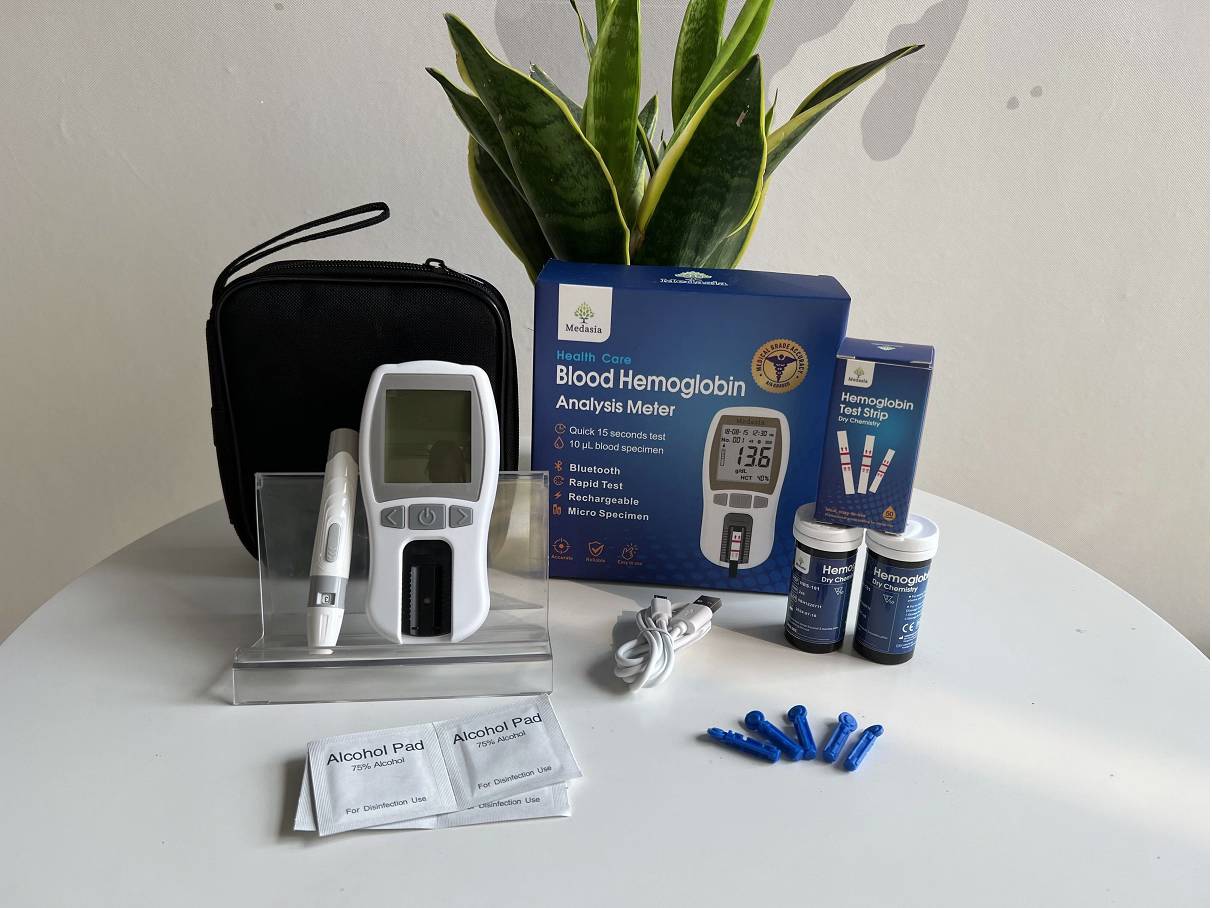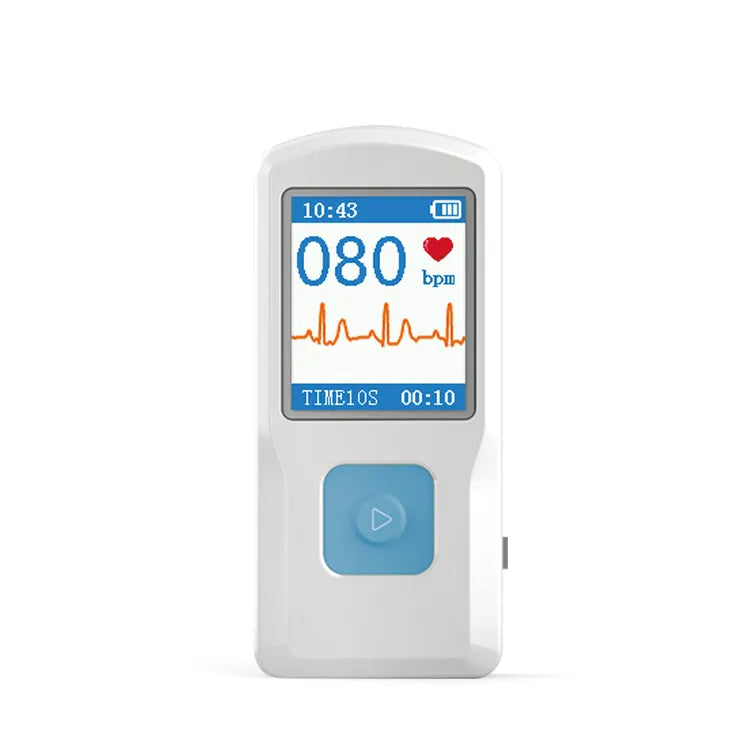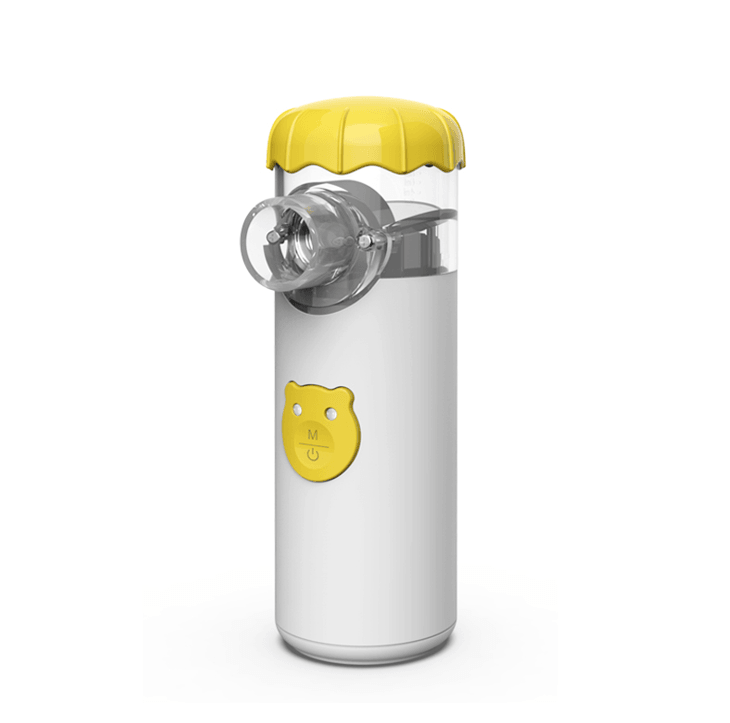Hemoglobin Meter: Let's help people to monitor anemia


Anemia: a global crisis impacting people worldwide
Anemia is a serious global public health problem that particularly affects young children, menstruating adolescent girls and women, and pregnant and postpartum women. WHO estimates that 40% of children 6–59 months of age, 37% of pregnant women, and 30% of women 15–49 years of age worldwide are anemic. Anemia’s significant effect on productivity also makes it an economic crisis. Iron-deficiency anemia alone drags down the global economy with a staggering loss of almost 1% of global gross domestic product annually. But most of all, the disproportionate impacts of anemia on women and girls is propelling a gender equality crisis. According to calculations based on World Health Organization available data, anemia is afflicting twice as many women as men. Though largely invisible, the scale and scope of anemia touches every corner of the planet: nearly one-quarter of the world’s population is affected.Anemia remains a major health problem, especially among females in less developed countries. The implementation of preventive programs with a focus on improving access to iron supplements, early diagnosis and the treatment of hemoglobinopathies should be taken into consideration.

What is anemia?
Anemia is a condition in which the number of red blood cells or the hemoglobin concentration within them is lower than normal. Hemoglobin is needed to carry oxygen and if you have too few or abnormal red blood cells, or not enough haemoglobin, there will be a decreased capacity of the blood to carry oxygen to the body’s tissues. A low hemoglobin count is generally defined as less than 13.2 grams of hemoglobin per deciliter (132 grams per liter) of blood for men and less than 11.6 grams per deciliter (116 grams per liter) for women. In children, the definition varies with age and sex. These thresholds may differ slightly from one medical practice to another.
The topic of the article
The main focus of this article is to enhance people's understanding of monitoring hemoglobin levels at home and selecting the most suitable hemoglobin meter test kit. In this article, we will introduce our four different kinds of hemoglobin meters. Maintaining a healthy lifestyle plays a crucial role in our overall well-being. An essential aspect of safeguarding our health involves practicing self-care and adopting proper health routines. For this reason, many individuals rely on hemoglobin meter test kits to effectively manage their health, as these kits provide vital information about their blood's hemoglobin levels.
The company of Medasia
Medasia is dedicated to fostering global accessibility to healthcare by empowering individuals through self-care. Our ambition is to ensure that people worldwide have the means and knowledge to take control of their well-being.
Medasia, driven by innovation, specializes in self-tests for various medical conditions. We provide products that empower individuals to proactively manage their health conveniently and independently. Take the first step towards a healthier future with us.
For more information, visit www.medasiagroup.com
Early signs of anemia

Anemia symptoms can vary depending on the underlying cause and the severity of the condition. In some cases, anemia may be mild and initially show no noticeable symptoms. However, as the anemia worsens, symptoms typically start to manifest and may intensify over time. Recognizing these symptoms is crucial for early detection and appropriate management of anemia.
Possible symptoms of anemia include:
- Tiredness and weakness.
- Shortness of breath.
- Pale or yellowish skin, which might be more obvious on white skin than on Black or brown skin.
- Irregular heartbeat.
- Dizziness or lightheadedness.
- Chest pain.
- Cold hands and feet.
- Headaches.
What causes of anemia?
Anemia occurs when the blood doesn't have enough hemoglobin or red blood cells.This can happen if:
①Anemia occurs when the body doesn't produce enough hemoglobin or red blood cells, or when the red blood cells are not functioning properly. Hemoglobin is a protein found in red blood cells that carries oxygen from the lungs to the body's tissues. When there is a deficiency of hemoglobin or red blood cells, the body may not receive enough oxygen, leading to various symptoms and health complications.
②Bleeding is one of the common causes of anemia, particularly when it leads to the rapid loss of red blood cells and hemoglobin from the body. When there is excessive bleeding due to injury, surgery, or certain medical conditions, the rate of blood loss can outpace the body's ability to produce new red blood cells and hemoglobin. This imbalance results in anemia, which leads to decreased oxygen-carrying capacity in the blood and can cause various symptoms and health issues.
③When the body destroys red blood cells and the hemoglobin within them at a rate faster than they can be replaced. This condition is known as hemolytic anemia.
The application scope for using a hemoglobin meter

The hemoglobin meter finds wide application across various organizations involved in healthcare, research, and diagnostics. Here's a breakdown of its application scope in different settings:
①Hospitals:
Hemoglobin meters are extensively used in hospitals for rapid and accurate hemoglobin level measurements. They are employed in emergency departments, critical care units, and various medical wards to monitor patients' hemoglobin levels for diagnosis, treatment, and management of various medical conditions.
②Research Institutes:
Research institutes often use hemoglobin meters to conduct studies related to anemia, hematology, and other medical research areas. These devices aid researchers in collecting data for clinical trials, epidemiological studies, and medical research projects.
③Ministry of Health (MOH):
Hemoglobin meters play a crucial role in public health initiatives undertaken by the MOH. They are used for mass screening programs, such as identifying anemia prevalence in specific populations, assessing blood donation eligibility, and monitoring the health status of certain groups.
④Clinics:
Hemoglobin meters are commonly found in medical clinics and primary care centers. They facilitate quick and efficient hemoglobin testing for routine health check-ups, diagnosis of anemia, and monitoring of chronic conditions that affect hemoglobin levels.
⑤Pharmacies:
Some pharmacies offer point-of-care testing services, including hemoglobin level measurements. Hemoglobin meters in pharmacies help in providing rapid results for customers seeking to monitor their health or as part of health screening services.
⑥Anemia Centers:
Specialized centers that focus on anemia diagnosis, treatment, and management use hemoglobin meters extensively. These centers offer comprehensive care for patients with anemia, and hemoglobin meters are essential tools in their diagnostic and monitoring processes.
⑦Physical Examination Centers: Hemoglobin meters are commonly utilized in physical examination centers to assess individuals' overall health status. The quick and convenient testing allows for the inclusion of hemoglobin level measurements in routine medical check-ups.
Hemoglobin meters have a valuable application scope for individuals in various healthcare professions, helping them in their specific roles and enhancing patient care. Here's how each professional can benefit from using a hemoglobin meter:
①General Practitioner (GP):
GPs can use hemoglobin meters to quickly assess a patient's hemoglobin levels during routine health check-ups or when investigating symptoms that may be related to anemia or other blood disorders. This aids in timely diagnosis and appropriate management of patients.
②Cardiologist: For cardiologists, hemoglobin meters play a role in assessing a patient's overall health, as hemoglobin levels can provide insights into cardiovascular function and oxygen-carrying capacity.
③Ophthalmologist:
Hemoglobin meters can be useful for ophthalmologists in assessing patients with conditions affecting ocular blood flow and oxygenation. Hemoglobin levels may also be relevant in cases of diabetic retinopathy and other retinal vascular disorders.
④Anemia Specialist:
As specialists in anemia and blood disorders, these professionals rely on hemoglobin meters as essential tools for diagnosing anemia severity, monitoring treatment progress, and determining the effectiveness of interventions.
⑤Nurse:
Nurses can use hemoglobin meters to perform quick hemoglobin tests, providing valuable information to healthcare teams during patient assessments and treatments. They may also use these devices to monitor patients' hemoglobin levels during hospital stays or in outpatient settings.
⑥Dietitian:
For dietitians, hemoglobin meters can aid in assessing the nutritional status of patients, especially concerning iron-deficiency anemia. The data from these measurements can guide personalized dietary recommendations to address specific deficiencies.
⑦Endocrinologist:
Hemoglobin meters can be useful for endocrinologists in evaluating patients with endocrine disorders that may affect hemoglobin levels, such as diabetes and thyroid disorders.
⑧Pharmacist:
In certain healthcare settings, pharmacists may perform point-of-care hemoglobin tests. This can help in identifying anemia-related concerns, recommending appropriate over-the-counter supplements, or advising patients on prescription medications.
⑨Anemia Educator:
Hemoglobin meters are indispensable tools for anemia educators, as they allow for quick and frequent monitoring of patients' hemoglobin levels during educational sessions. This helps assess the effectiveness of education and intervention strategies.
Key considerations for selecting hemoglobin test meter
①Mission Hemoglobin Plus Hb

PROS
✅Tiny blood sample
✅Fast results within 15 seconds with POC testing
✅Auto-calibration
✅Fast data transfer via Mini USB port
✅Easy to use by 3 steps
✅FDA approval
The Mission Plus Hb Hemoglobin Test Meter offers a range of advanced features, ensuring accurate and rapid hemoglobin level measurements, making it an indispensable tool for healthcare professionals and patients. It has many features:
⭐Tiny blood sample: The device requires only 10 ul blood sample for testing, minimizing discomfort for the patient and making the process quick and efficient.
⭐POC Testing: The Mission Hemoglobin Plus Hb is optimized for on-the-spot testing, providing immediate results without the need for laboratory processing. This feature reduces waiting time and enables healthcare professionals to make swift and informed decisions.
⭐Portable and handheld: The device's compact and portable design allows for easy carrying, making it convenient for use in various settings, including clinics, hospitals, and remote locations.
⭐Large, easy-to-read LCD: The meter boasts a sizable LCD display, ensuring clear visibility of test results. This user-friendly feature simplifies result interpretation for both healthcare professionals and patients.
⭐Contamination-minimizing test device format: The device is designed to minimize the risk of contamination during testing, ensuring reliable and accurate results with each use. Wide Hb measurement range of 4.5-25.6 g/dl with Hct range of 13-75%.
⭐Precise results equivalent to laboratory analyzers: The Mission Hemoglobin Plus Hb delivers precise results that are equivalent to those obtained from laboratory analyzers. This ensures the reliability of the measurements for confident diagnosis and treatment.
⭐Results in < 15 seconds: Leveraging advanced technology, the meter provides rapid results in less than 15 seconds, enabling prompt medical interventions when necessary.
⭐Auto-calibration: The meter is equipped with auto-calibration functionality, eliminating the need for manual calibration before each use. This guarantees accurate readings without any additional complexity for the user.
⭐Stores up to 1,000 results: With substantial storage capacity, the Mission Hemoglobin Plus Hb can store up to 1,000 test results. This feature facilitates efficient record-keeping and easy tracking of patients' hemoglobin levels over time.
⭐Fast data transfer via mini USB port: The inclusion of a Mini USB port allows for swift data transfer to compatible devices like computers or smartphones. This feature enables quick sharing of test results with healthcare professionals, fostering streamlined communication.

②Portable Handheld Mission Hemoglobin Meter

PROS
✅Designed for POC testing
✅Portable handheld
✅Large, easy-to-read LCD
✅Stores up to 1000 results
✅Fast results within in 15 seconds
✅Auto-calibration
✅Fast data transfer via Mini USB port
✅Tiny blood sample
This compact and portable device offers a range of features to provide quick and accurate hemoglobin level measurements, making it an indispensable tool for healthcare professionals and patients alike. It has many features:
⭐POC testing: The Mission Hemoglobin Meter is designed for on-the-spot testing, enabling immediate results without the need for laboratory processing. This feature reduces waiting time, allowing healthcare professionals to make prompt decisions and provide timely care.
⭐Portable and handheld: The device's lightweight and compact design make it highly portable, allowing users to carry it conveniently wherever they go. It is ideal for use in various settings, including clinics, hospitals, and remote areas.
⭐Large, easy-to-read LCD: The meter boasts a large LCD display, ensuring clear visibility of test results. This user-friendly feature makes it easy for healthcare professionals and patients to read and interpret the data.
⭐Stores up to 1000 results: The Mission Hemoglobin Meter has substantial storage capacity, capable of storing up to 1000 test results. This data retention capability enables efficient record-keeping and easy tracking of patients' hemoglobin levels over time.
⭐Fast results within 15 seconds: Thanks to its advanced technology, the device provides rapid results within just 15 seconds. This swift response time is vital in emergency situations and time-sensitive medical interventions.
⭐Auto-calibration: The meter is equipped with auto-calibration functionality, eliminating the need for manual calibration before each use. This ensures accurate and reliable measurements without any additional hassle for the user.
⭐Fast data transfer via mini USB port: The inclusion of a Mini USB port enables seamless and rapid data transfer to compatible devices such as computers or smartphones. This feature facilitates quick sharing of test results with healthcare professionals for further analysis and decision-making. Wide Hb measurement range of 4.5-25.6 g/dl with Hct range of 13-75%.
⭐Tiny blood sample: The device requires only 10 ul blood sample for testing, minimizing discomfort for the patient and making the process quick and efficient.

③Bluetooth Hemoglobin Meter

PROS
✅Tiny blood sample
✅Fast measuring time
✅Easy-to-read large LCD
✅Rechargable Battary
This advanced meter is equipped with innovative features, providing a seamless and user-friendly experience for healthcare professionals and patients alike. It has many features:
⭐Bluetooth connectivity: The Hemoglobin Meter is integrated with Bluetooth technology, allowing seamless data transfer to compatible devices such as smartphones or tablets. This feature enables real-time sharing of test results with healthcare providers, ensuring timely analysis and decision-making.
⭐Tiny blood sample: The device requires only 10 ul blood sample for testing, minimizing discomfort for the patient and making the process quick and efficient.
⭐Fast measuring time: Thanks to its state-of-the-art technology, the meter delivers rapid measuring times, providing hemoglobin level results in just within 15 seconds. This feature is especially valuable in emergency situations or time-sensitive medical scenarios.
⭐Easy-to-read large LCD: The meter boasts a large LCD display, ensuring clear visibility and readability of test results. This user-friendly feature makes it convenient for healthcare professionals and patients to interpret the data accurately.
⭐Rechargeable battery: The Hemoglobin Meter comes with a built-in rechargeable battery, eliminating the need for constant battery replacements. This eco-friendly and cost-effective feature ensures continuous usability without interruptions.
④Portable Home Use Hemoglobin Meter

PROS
✅Tiny blood sample
✅Fast results within 15 seconds
✅Easy-to-read with large LCD
✅More economical compared with bluetooth hemoglobin meter
The Portable Home Use Hemoglobin Meter, a state-of-the-art medical device designed for convenience and accuracy. Packed with cutting-edge features, this meter is tailored for home use, making hemoglobin level monitoring effortless and reliable. It has many features:
⭐Tiny blood sample: The meter requires only 10ul blood sample for testing, ensuring a minimally invasive and comfortable experience for users.
⭐Fast measuring time: Thanks to its advanced technology, the meter provides rapid measuring times, delivering hemoglobin level results quickly and efficiently.
⭐Easy-to-read large LCD: The device is equipped with a large LCD display, ensuring clear visibility and readability of test results. This user-friendly feature allows users to interpret the data with ease.
1. Instruction
The hemoglobin monitoring System was IVD Reagent used for Hemoglobin (Hb) concentration. According to the Administration of Registration Of In Vitro Diagnostic Reagents issued by the State Food and Drug Administration, IVD Reagent for human physiological sign measurement must be registered and administrated as medical instrument, clinical investigation is indispensable before the product is launched to market. To ensure effectiveness and safety, at least 2 clinical positions are needed for clinical investigation, clinical trial study report should be made by the clinical organization after the investigation.
2. Purpose
To certify the Hemoglobin monitoring System from Tech (meter model: Ref No.HB- 101, strip model: Ref No.HBS- 101 can be safely used. The accuracy of the research results meets the market requirements.

3. Investigation conclusion
The feasibility of clinical application and reliability of test results of this product are verified by comparative testing. 53 samples were measured in Changsha CIJI Hospital and 50 samples in Dongfanghong Town Health Center, there was no significant difference found in the results when compared with YSI2300, and correlation coefficient was acceptable.
Key factors to consider when purchasing hemoglobin meter
What is the minimum order quantity (MOQ) for hemoglobin meter ?
We support small quantity test order, and the price is negotiable for large quantity.
Delivery time for hemoglobin meter ?
We can make the delivery within 30 days usually, But the actual delivery date can only be replied to you after we confirm with the factory .And sample delivery time needs to be confirmed too.
What certificates do you have for hemoglobin meter?
We provide customers with CE, ISO, FSC, CFDA FDA certification. Among these four hemoglobin meters, Mission hemoglobin plus hb and portable handheld mission hemoglobin meter with FDA.
Do you offer customized packaging or branding options for hemoglobin meter?
Yes, we offer customized packaging and branding options for the hemoglobin test meter. Please let us know your requirements so that we can provide you with a quote.
How about the packing for hemoglobin meter ?
For bluetooth hemoglobin meter size: 13.6X6.6X2.5cm
Single weight: 90g
For portbale home use hemoglobin meter size: 13.6*6.5*2.5cm
Single weight: 90g
For Portable Handheld Mission Hemoglobin Meter size:
12.7*5.8*2.5cm
For Mission Hemoglobin Plus Hb size: 13.7*7.9*2.6cm
Would you send me a sample to check the quality before I order?
Sure. We would love to send you the sample ,even with logo if you can offer your artwork.
Payment options
Our payment terms and methods for international transactions are T/T ,LC ,Paypal and so on ,Please let us know your preferred method so that we can proceed accordingly.
How about the price of hemoglobin meter?
Please contact with us at info@medasiagroup.com
When using a hemoglobin meter
1.Cleaning: Before and after each use, clean the external surfaces of the meter with a soft, lint-free cloth dampened with a mild disinfectant or alcohol wipe. Avoid using harsh chemicals or abrasive materials that could damage the device. A cotton cloth can be used to clean the surface of the best hemoglobin meter. Use a damp cotton cloth if necessary.A dry, soft cloth may be used to clean the LCD and the sensor area. It is recommended that the hemoglobin meter be stored in the carrying case after each use.Avoid getting liquids or residue entering the meter through the Strip Channel or Code Chip Slot.
2.Battery check: If the meter uses batteries, check the battery status regularly. Replace the batteries when necessary to ensure uninterrupted operation.
3.Test strip check: If the hemoglobin meter uses test strips, inspect the strips for any signs of damage, discoloration, or contamination. Only use test strips that are within their expiration date and stored according to the manufacturer's recommendations.
4.Avoid moisture: Keep the meter and its components away from water and moisture to prevent damage.
5.Storage: When not in use, store the hemoglobin meter in a cool, dry place, away from direct sunlight and extreme temperatures.
6.Follow manufacturer's instructions: Always adhere to the manufacturer's guidelines for cleaning, maintenance, and storage specific to your hemoglobin meter model.
WE RECOMMEND
Related posts
- Subscribe MedInsights
- Subscribe MedInsights
- Subscribe MedInsights
- Subscribe MedInsights
- Subscribe MedInsights









